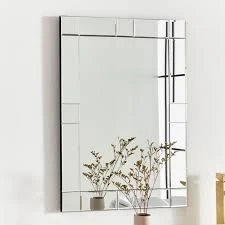

High Reflective Glass The Future of Modern Architecture
In an era where sustainability and aesthetics converge, high reflective glass has emerged as a groundbreaking material in the architectural landscape. Known for its distinctive capability to reflect natural light while maintaining optimal thermal performance, this advanced glazing solution is transforming the way we design buildings and public spaces.
The Properties of High Reflective Glass
High reflective glass, often treated with a specialized coating, boasts an impressive ability to increase the reflectivity of sunlight. This property renders it particularly effective in minimizing solar heat gain, making it an ideal choice for energy-efficient buildings. Unlike traditional glass, which can absorb heat and lead to increased cooling costs, high reflective glass reflects a significant portion of solar radiation, reducing the load on air conditioning systems. This characteristic not only assists in creating comfortable indoor environments but also contributes to lower energy consumption and reduced carbon emissions—hallmarks of sustainable design.
Moreover, high reflective glass is available in various shades, allowing architects and designers to select the appropriate level of reflectivity and aesthetics for their projects. Whether it's a shimmering silver finish or a more subdued bronze hue, the options cater to diverse architectural styles while enhancing visual appeal.
Aesthetic Benefits in Architecture
Beyond its functional advantages, high reflective glass possesses stunning aesthetic qualities. Its mirror-like surface can create striking visual effects, allowing buildings to blend harmoniously with their surroundings or stand out as prominent urban landmarks. The reflective quality of the glass can transform a simple structure into an artful statement, capturing the beauty of the sky, cityscape, or natural environment around it.
In addition to visual impact, high reflective glass can significantly alter the perception of space. By maximizing light penetration and reducing the need for artificial lighting during daylight hours, interiors appear more spacious and vibrant. The transparency and brightness offered by this glass type can elevate the quality of workspaces, residential areas, and public buildings.

Sustainability and Environmental Impact
As the global community increasingly emphasizes sustainability, the role of high reflective glass becomes even more critical. By minimizing energy consumption and leveraging natural light, buildings constructed with this glass can achieve significant reductions in their environmental footprint. Many high reflective glass products also feature recycled content, aligning with green building initiatives and LEED certification requirements.
Moreover, the durability of high reflective glass contributes to its sustainability. Resistant to discoloration, fading, and the wear and tear associated with climate exposure, this glass maintains its appearance and performance over time, reducing the need for replacements and minimizing waste.
Application Across Industries
The versatility of high reflective glass allows it to be employed across various sectors, from residential buildings to corporate offices and educational institutions. High-rise buildings frequently incorporate this material to create sleek, modern facades that reflect the dynamic nature of urban life. Additionally, shopping centers and hotels utilize high reflective glass for its ability to draw in natural light while creating a sense of openness.
In the healthcare sector, high reflective glass contributes to healing environments by enhancing natural light, which is essential for patient well-being. Educational institutions also benefit, as classrooms filled with daylight foster improved focus and productivity among students.
Conclusion
High reflective glass is not just a trend; it is a significant evolution in architectural materials. With its unique combination of aesthetic flexibility and energy efficiency, it is proving to be a valuable resource in the quest for sustainable building practices. As architects and designers continue to explore innovative ways to integrate this glass type into their projects, the future of modern architecture looks brighter than ever—both literally and metaphorically. Embracing high reflective glass not only enhances the beauty of structures but also champions a more sustainable and environmentally friendly approach to building design.